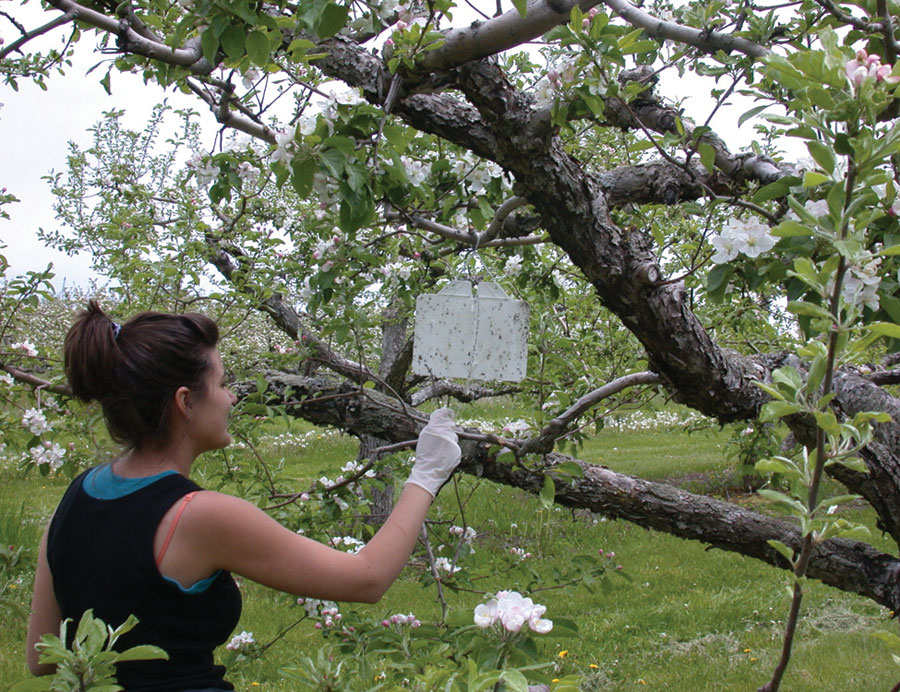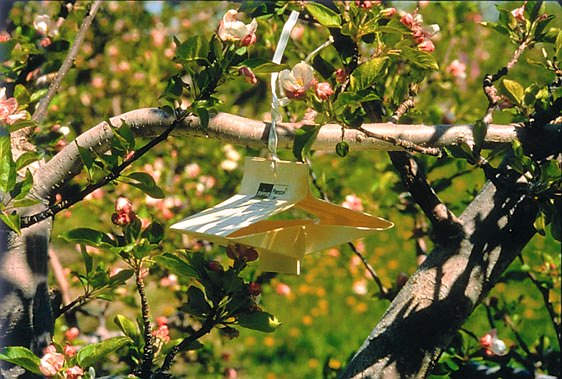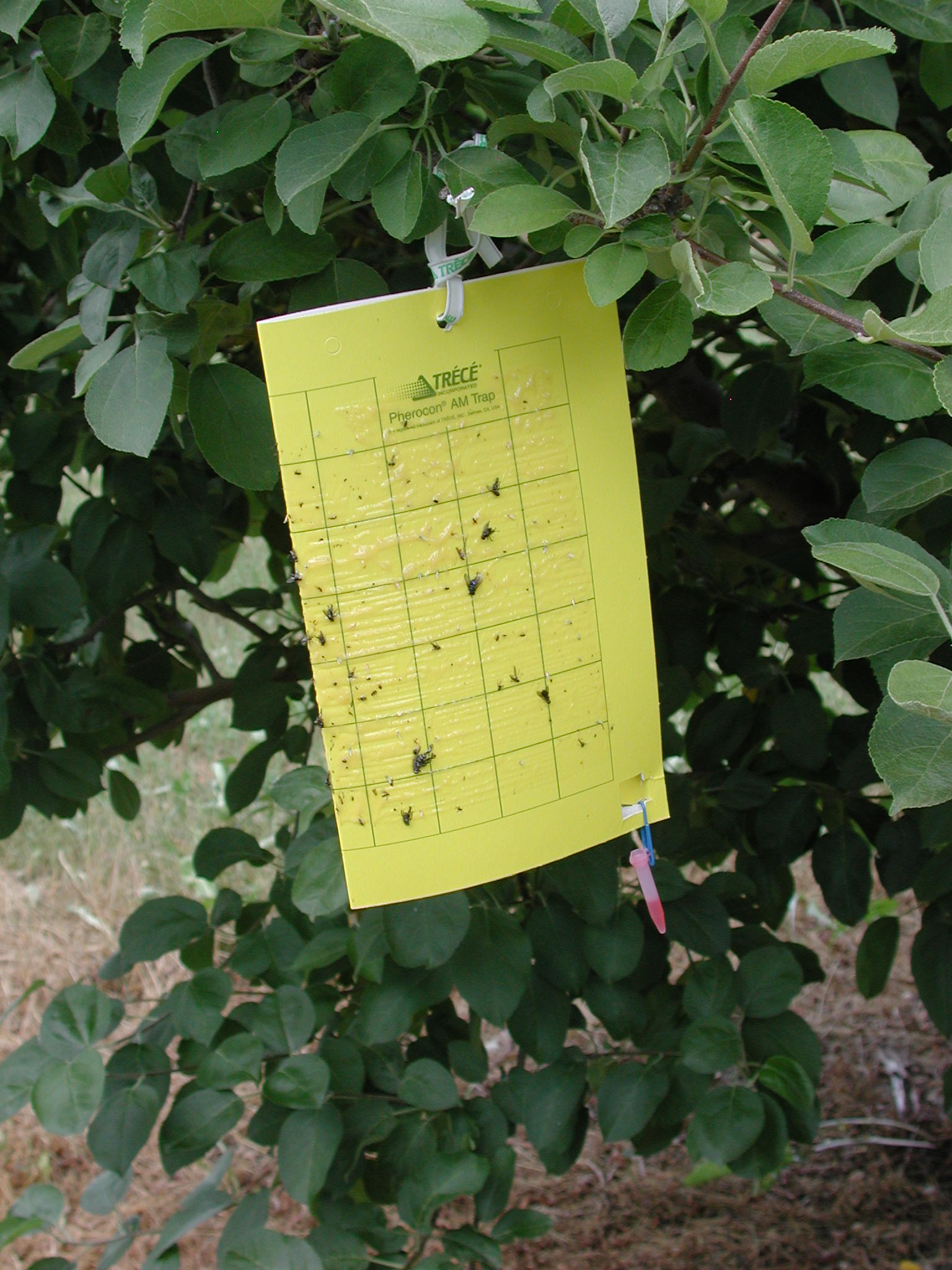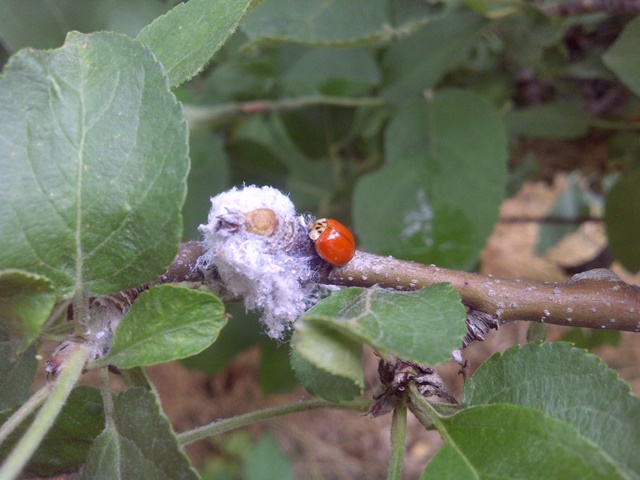
The fight against apple pests
April 22, 2020
It is often said that every day is Earth Day on the farm.
That’s true in the sense that farmers work with the air, water and soil on their farms every day to raise livestock and grow fruits, vegetables and crops.
It’s also true, though, when you look at the many things farmers do to keep that air clean, that water unpolluted and that soil healthy, fertile and free of pests.
In an apple orchard, for example, there are many pests who like apples just as much as we do – and work hard to get to them before they have a chance to ripen and go to market for us to enjoy.
There are many tools that apple growers can use to protect their crops from those pests. A leading one is a system called Integrated Pest Management, or IPM for short. It is often described as good bugs fighting bad bugs, but it’s a bit more complicated than that.
IPM is a sophisticated way of controlling disease and pest levels. The system works together with nature: farmers monitor orchards closely to determine when, or if, pest levels reach a threshold where they need to some kind of action.
Growers who use IPM in their orchards have to very carefully monitor and manage their crops. They have to have a good understanding of which pests are present in their orchards and how they behave, which beneficial organism can be used to combat them, and what type of monitoring techniques to use to keep on top of the pest populations.
You can watch the following video to learn more:
They also need to know which crop protection methods to use when and how much to use, as well as keep careful spray records of any products they apply in the orchard.
 Scouting (seen at left) is one way growers keep tabs on orchard pests – carefully monitoring tree health and fruit development, as well as weather conditions and the presence of any pests and natural enemies.
Scouting (seen at left) is one way growers keep tabs on orchard pests – carefully monitoring tree health and fruit development, as well as weather conditions and the presence of any pests and natural enemies.
Pheromone traps (seen below at right) or sticky cards with bait are widely used to help growers catch and identify pests present in their orchards.
 Many pests are attacked by beneficial insects or mites and by various fungal, bacterial and viral agents, and often, these natural enemies will do a good job of suppressing pest populations.
Many pests are attacked by beneficial insects or mites and by various fungal, bacterial and viral agents, and often, these natural enemies will do a good job of suppressing pest populations.
This includes common insects many of us will recognize from our own homes and gardens.
For example, ear wigs like to feed on aphids and other insects that attack apple trees, and lady beetles will go after aphids (see photo at right), small caterpillars, scale insects, mealybugs and mites.
Brett Schuyler is a young apple grower from Norfolk County who is featured in a separate post on this website.
The Schuylers use an IPM program on their farm where they, with the help of crop scouts from the Norfolk Fruit Growers Association, monitor different pest populations and diseases, and decide how to best protect their crops.
The Schuylers are also creating habitats that encourage natural pollinator populations and using tillage techniques that reduce soil erosion and energy use.
Cathy McKay is another apple grower you’ve met on our website. She managed a small IPM consulting business from home, giving advice to other farmers on how to manage any potential threats from insects and other pests that can threaten an entire apple crop.
She uses IPM extensively in her Durham Region orchard and tries new pest management products as they become available. This helps her know which products to suggest for her customers so they can use as few pest control methods as possible while still protecting the trees and fruit.
The Ontario Ministry of Agriculture and Food employs IPM specialists like Kristy Grigg-McGuffin to work with growers on responsible pest management.
For example, Kristy conducts provincial-wide scout training and works with apple growers across Ontario providing expertise for their IPM programs. As well, she helps lead many in-field apple research projects to help find solutions to new pests or problems.
The fight to keep orchards healthy and free of pests so that we can enjoy delicious Ontario apples is an ongoing one.
New pest issues are always emerging, but advancements in the science of pest management and today’s safer, more targeted pest control products are also helping apple growers continually reduce their environmental footprint.
Written by Lilian Schaer for Ontario Apple Growers.
